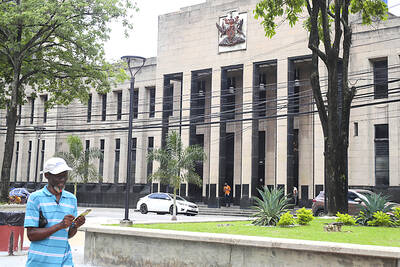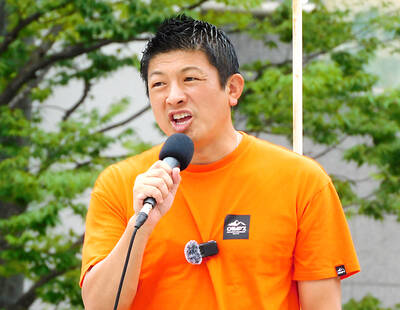Nearly two-thirds of the buildings that collapsed in Mexico City’s monstrous earthquake last month were built using a construction method that is now forbidden in seismic hot spots in the US, Chile and New Zealand, data compiled by a team of structural engineers at Stanford University showed.
The suspect building technique called flat slab — in which floors are supported only by concrete columns — caused 61 percent of the building collapses in last month’s magnitude 7.1 earthquake, which killed 369 people and blanketed tree-lined avenues in rubble.
Now, several prominent engineers have said some of those structural failures could have been prevented and lives could have been saved had Mexico City officials only gone forward with a proposal to forbid that type of construction when they toughened building codes after a 1985 earthquake in Mexico’s capital.
“We have known for 30 years that this system killed lots of people, so why are we still using it?” asked Eduardo Miranda, a professor of civil and environmental engineering at Stanford and global expert on earthquake-resistant design who compiled the data. “The right decision after ’85 would have been to completely ban this kind of construction. We could have saved lives.”
Concrete slabs used to build floors and ceilings can be cast to include some rebar for reinforcement and give builders greater flexibility in room layout and allow for higher ceilings.
However, in an earthquake, without reinforced concrete walls or lateral bracing to resist forces pushing structures sideways, buildings with that design can move too much. The columns, and connections between the slabs and columns, can easily break, prompting collapse, as was the case at a school where 26 people died, most of them children.
Experts have concurred that the devastation caused by last month’s earthquake in the city of 8.9 million people could have been much worse had building codes not been so strong, but it has also forced an uncomfortable conversation about their shortcomings.
Now, as experts race to toughen standards to retrofit hundreds of damaged buildings, they are grappling with the reality that corruption has allowed hundreds of structures to be built outside the rules atop the soft soils of Mexico City’s ancient lake bed.
In the crisis following the 1985 earthquake, a group of academics, building officials and engineers drafted emergency recommendations to strengthen Mexico City’s seismic codes, which were swiftly passed into law.
Some architects and builders were opposed to an outright ban on flat slab construction, said Miranda, who wrote reports that informed the committee.
The new codes allowed flat slab construction if developers designed the building to be seismically stronger than structures with beams or concrete walls.
Authorities did not pay enough attention to evaluating if existing flat slab structures needed a seismic retrofit, Miranda said.
The new codes gave more responsibility to a network of private engineers who are hired and paid by developers, and who submit structural plans to borough authorities.
In practice, that means private engineers — not government experts — vet projects’ structural safety, and corruption can intervene.

IDENTITY: A sex extortion scandal involving Thai monks has deeply shaken public trust in the clergy, with 11 monks implicated in financial misconduct Reverence for the saffron-robed Buddhist monkhood is deeply woven into Thai society, but a sex extortion scandal has besmirched the clergy and left the devout questioning their faith. Thai police this week arrested a woman accused of bedding at least 11 monks in breach of their vows of celibacy, before blackmailing them with thousands of secretly taken photos of their trysts. The monks are said to have paid nearly US$12 million, funneled out of their monasteries, funded by donations from laypeople hoping to increase their merit and prospects for reincarnation. The scandal provoked outrage over hypocrisy in the monkhood, concern that their status

The United States Federal Communications Commission said on Wednesday it plans to adopt rules to bar companies from connecting undersea submarine communication cables to the US that include Chinese technology or equipment. “We have seen submarine cable infrastructure threatened in recent years by foreign adversaries, like China,” FCC Chair Brendan Carr said in a statement. “We are therefore taking action here to guard our submarine cables against foreign adversary ownership, and access as well as cyber and physical threats.” The United States has for years expressed concerns about China’s role in handling network traffic and the potential for espionage. The U.S. has

Trinidad and Tobago declared a new state of emergency on Friday after authorities accused a criminal network operating in prisons across the country of plotting to kill key government officials and attack public institutions. It is the second state of emergency to be declared in the twin-island republic in a matter of months. In December last year, authorities took similar action, citing concerns about gang violence. That state of emergency lasted until mid-April. Police said that smuggled cellphones enabled those involved in the plot to exchange encrypted messages. Months of intelligence gathering led investigators to believe the targets included senior police officers,

A disillusioned Japanese electorate feeling the economic pinch goes to the polls today, as a right-wing party promoting a “Japanese first” agenda gains popularity, with fears over foreigners becoming a major election issue. Birthed on YouTube during the COVID-19 pandemic, spreading conspiracy theories about vaccinations and a cabal of global elites, the Sanseito Party has widened its appeal ahead of today’s upper house vote — railing against immigration and dragging rhetoric that was once confined to Japan’s political fringes into the mainstream. Polls show the party might only secure 10 to 15 of the 125 seats up for grabs, but it is